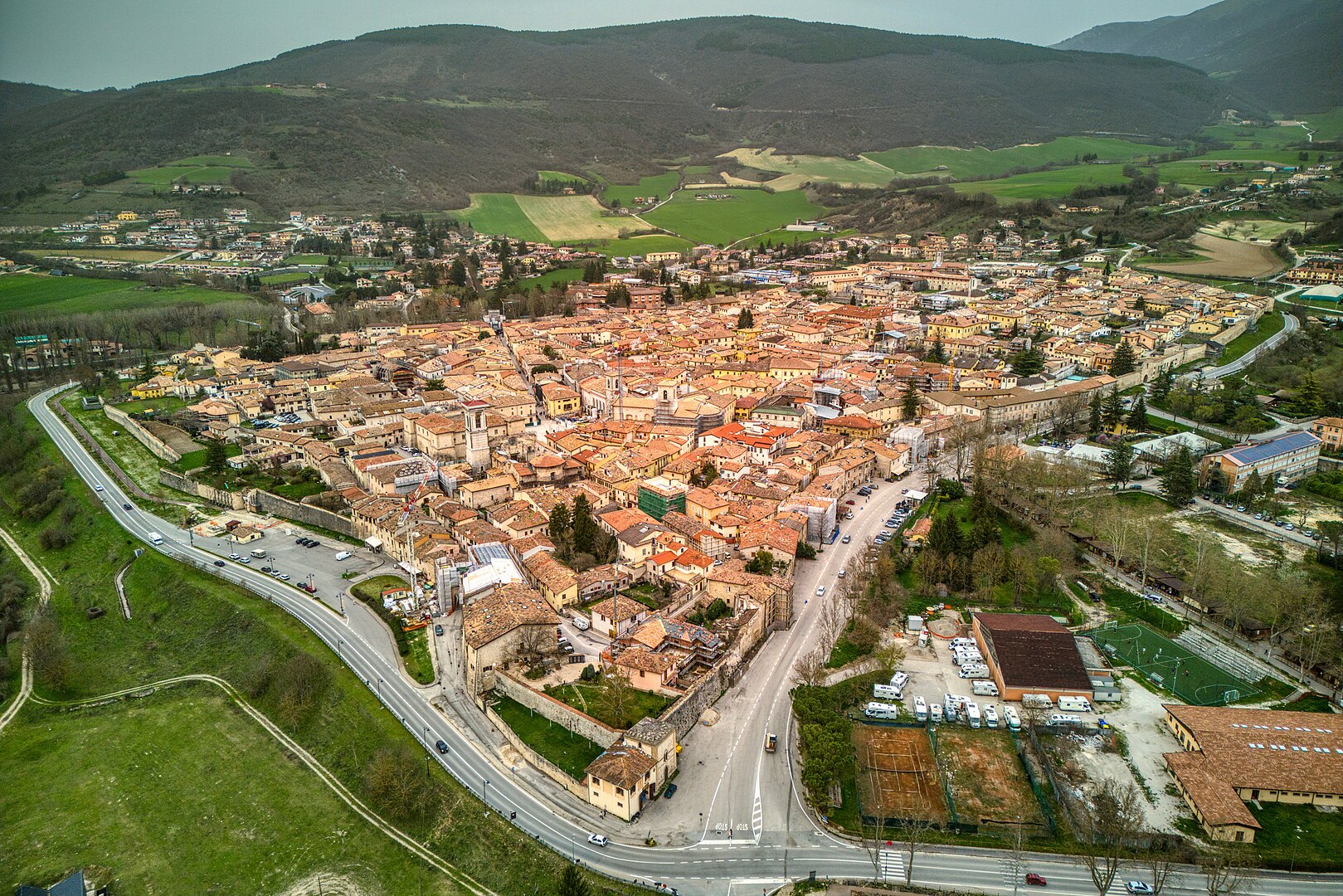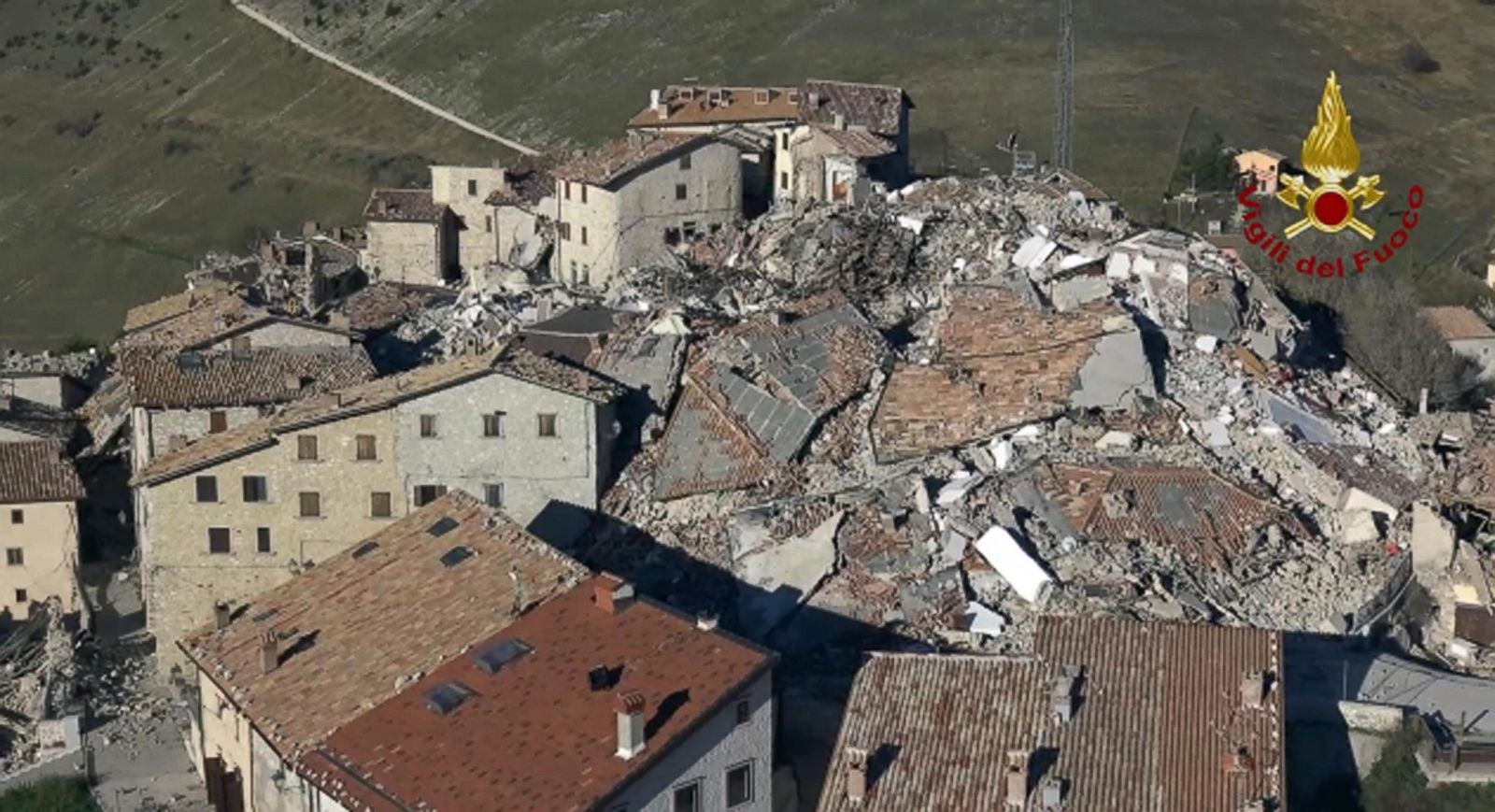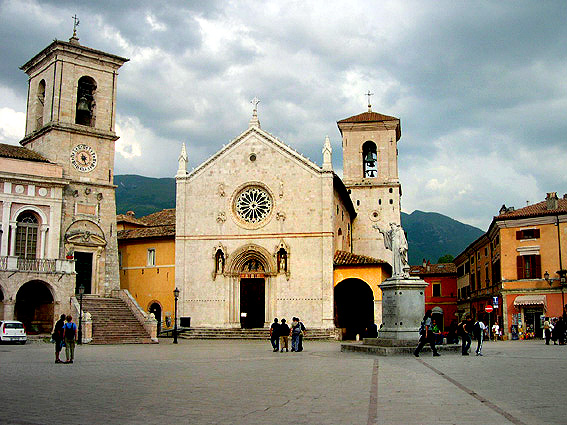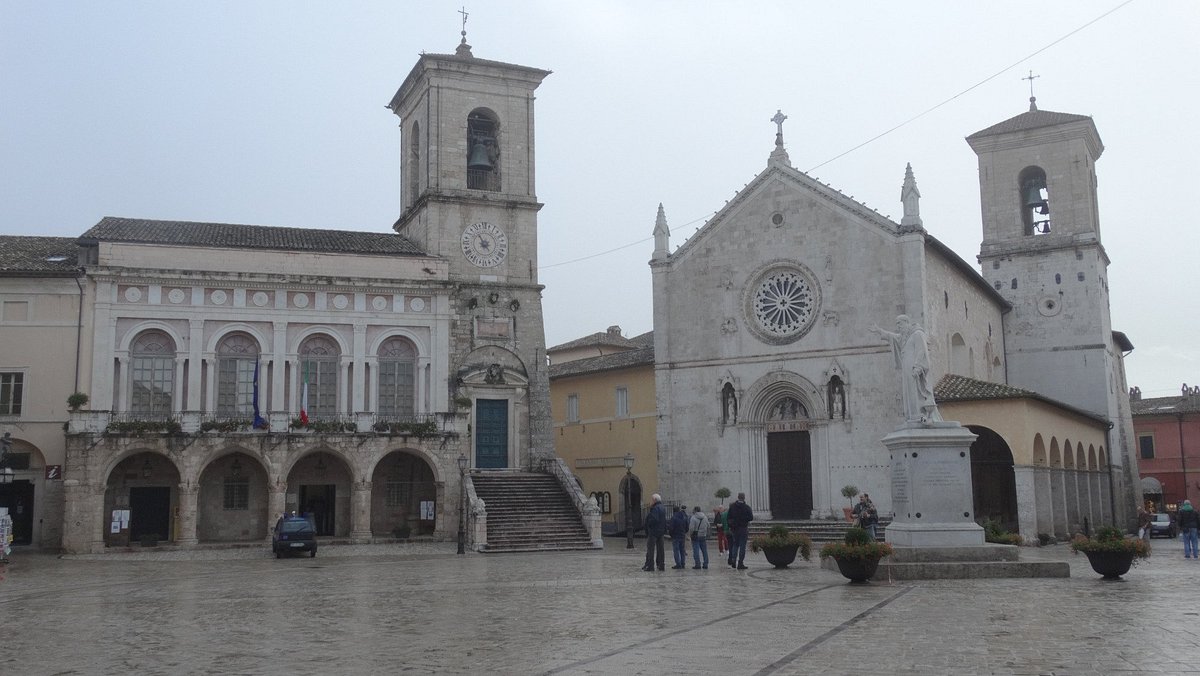Walking through the stone streets of Norcia in April 2025, it’s hard to believe almost nine years have passed since the devastating earthquakes of 2016. The town bears both scars and signs of renewal. The fallen walls and damaged basilica stand as reminders of nature’s power, while new structures and the determined spirit of locals show remarkable resilience.
The Benedictine monks of Norcia have become symbols of hope and rebirth in this ancient Italian town. After their monastery and the Basilica of St. Benedict were severely damaged, they moved to a temporary location on the hills outside town. Today, their ongoing rebuilding efforts represent more than just physical reconstruction—they embody the restoration of faith and community in a place deeply wounded by disaster.
My journey through earthquake-affected Norcia revealed something unexpected—amid the rubble and reconstruction, life continues with surprising vitality. Local shopkeepers still offer their famous prosciutto and truffles, bells ring for prayer, and the monks’ Gregorian chants echo across the valley. This isn’t just a story about destruction, but about how faith and determination can transform tragedy into opportunity for renewal.

The Heartbeat of Norcia: Unshaken Spirit Amid Ruins
Amid the rubble of Norcia, I discovered an inspiring resilience that transcends physical destruction. The Benedictine monks and local residents continue to embody the enduring spirit of this historic Italian town despite the devastating earthquakes of 2016.
Witnessing Resilience: A Personal Encounter
Walking through Norcia’s damaged streets, I was struck by the contrast between fallen structures and unwavering human spirit. The Basilica of St. Benedict, once standing proud in the town center, now exists mostly as a façade. Yet nearby, monks continue their ancient practices.
“We rebuild not just stone, but tradition,” a monk told me while showing me their temporary quarters. Their daily rhythm of prayer and work—the ora et labora of Benedictine life—continues uninterrupted despite their monastery lying in ruins.
The damaged bell tower, once calling faithful to prayer, stands partially reconstructed. Its broken silhouette against the sky became, for me, a powerful symbol of persistence.

Signs of Recovery and Ongoing Restoration Efforts
Reconstruction efforts in Norcia move forward with remarkable determination. Scaffolding embraces damaged buildings throughout town, including critical work on the Basilica’s remaining structure. Engineers and stonemasons work side by side with volunteers.
The monks have launched fundraising campaigns to rebuild their monastery according to traditional Benedictine architectural principles. These efforts blend modern safety standards with historic preservation.
Local businesses have reopened in temporary structures. I enjoyed a meal at a family restaurant operating from a prefabricated building, serving the same recipes they’ve prepared for generations.
The recovery timeline stretches years ahead, but progress is visible everywhere. Road clearance, structural assessments, and careful archaeological work proceed methodically, preserving Norcia’s cultural heritage while making it safe for residents and visitors.

Spiritual Sustenance: Embracing Faith and Community
During my time in Norcia, I witnessed how faith and community became the twin pillars supporting residents through the aftermath of devastating earthquakes. The monks’ dedication to spiritual traditions offered a powerful example of resilience that extended far beyond religious practice.
Benedictine Traditions and the Divine Office
The rhythmic chanting of prayers echoed through temporary structures as the monks maintained their centuries-old Divine Office schedule. I joined them for Vespers one evening, amazed at how they preserved this tradition despite losing their historic basilica.
“Our prayers continue as they have for 1,500 years,” Brother Antonio told me. “The earthquake took our buildings, not our purpose.”
The monks follow St. Benedict’s Rule with remarkable fidelity. Their day revolves around prayer, work, and community – a balanced approach to spiritual life that resonated deeply with me.
Several local residents serve as Benedictine Oblates, laypeople who incorporate Benedictine spirituality into their daily lives. Maria, a shopkeeper, explained how this connection helped her cope with loss.

Rekindled Hope through Community Solidarity
The earthquake destroyed physical structures but strengthened human bonds. I witnessed neighbors helping each other clear debris from homes, sharing meals, and offering emotional support.
The monks play a central role in this community healing. They’ve created gathering spaces where people share stories and find comfort in shared faith.
Weekly community dinners bring everyone together. At one such meal, I watched as elderly residents taught traditional recipes to younger generations – a beautiful transfer of cultural heritage amid reconstruction.
Local churches and aid organizations collaborate on rebuilding efforts. The spirit of Christianity here isn’t just about belief but practical action and mutual care.
“We rebuild stronger together,” Francesco, a volunteer coordinator, told me. His words captured the essence of Norcia’s approach to recovery.

Solid Foundations: Italy’s Commitment to Rebirth
Italy’s approach to recovery in Norcia showcases a remarkable blend of government initiatives, private partnerships, and cultural preservation efforts that honor the region’s rich heritage while building for the future.
Partnerships and Public Initiatives in Rebuilding
Walking through Norcia today, I witnessed firsthand how Italy has mobilized resources for rebuilding after the devastating 2016 earthquakes. The government has implemented a comprehensive reconstruction plan that prioritizes both speed and safety.
Energy company ENI has emerged as a key corporate partner, funding the restoration of important cultural landmarks. Their support has helped restore portions of Norcia’s artistic heritage that was seriously compromised during the earthquakes.
Local authorities work closely with national experts to ensure buildings meet modern safety standards while maintaining their historic character. This balance between progress and preservation struck me as particularly thoughtful.
The rebuilding process incorporates community input through public forums where residents can share concerns and suggestions. This collaborative approach helps ensure the new Norcia meets the needs of those who call it home.

Preserving Cultural Identity through Reconstruction
The careful reconstruction of the Basilica of St. Benedict stands as a powerful symbol of Norcia’s commitment to maintaining its cultural identity. Stone by stone, workers are recreating this centerpiece of the town’s heritage.
I spoke with local architects who explained how they’re using traditional materials and techniques alongside modern reinforcements. This thoughtful approach preserves the authentic feel of buildings while making them more resilient.
The monks of Norcia have become unexpected champions of this cultural renaissance. Their brewery not only provides funding for rebuilding efforts but also maintains centuries-old traditions that define the region’s identity.
Museums and cultural centers are being designed to tell the story of both Norcia’s past and its recovery. These spaces will ensure future generations understand the town’s history and the community’s resilience in rebuilding after disaster.

A Journey through Heritage: Visiting the Historical Landmarks
Norcia’s landmarks tell a story of destruction and resilience through their weathered stones and ongoing restoration efforts. Walking through the town reveals both heartbreaking damage and inspiring signs of rebirth.
From the Façade to the Crypt: A Story of Many Layers
The earthquake of October 30, 2016 devastated Norcia’s architectural treasures, most notably the Basilica of St. Benedict. Standing before the damaged façade, I was struck by how much remained despite the destruction. Only portions of the outer wall still stand, a haunting reminder of what was lost.
I watched restoration workers carefully cataloging original stones to be used in rebuilding. Each piece is numbered and photographed—a meticulous process that will take years to complete.
The crypt, miraculously, suffered less damage than the upper structures. This sacred space where St. Benedict and St. Scholastica were born remains partially accessible, drawing pilgrims despite the surrounding devastation.

The Bell Tower’s Tale: A Symbol of Endurance
The bell tower of Norcia’s cathedral stood for centuries before collapsing in the 6.6 magnitude quake. Now, temporary supports surround what remains, protecting it from further damage while plans for restoration develop.
I spoke with a local guide who explained the tower’s significance to the community. “When the bells rang, we knew we were home,” she told me, tears in her eyes. “We will hear them again.”
The restoration project is estimated to cost millions of dollars, funded through international donations and government grants. Engineers are using innovative techniques to strengthen the structures against future quakes while preserving their historical integrity.
The tower’s reconstruction has become a symbol of hope for locals who see its eventual completion as proof that Norcia will rise again.

Expressions of Caritas: The Kindness of Norcia
Walking through Norcia after the 2016 earthquake, I witnessed firsthand how this small Italian town embodied the true meaning of Caritas – love in action. The magnitude 6.2 quake had devastated central Italy, with Norcia among the affected areas.
What struck me most wasn’t just the physical rebuilding but the spirit of kindness that flowed through the community.
Locals opened their homes to displaced neighbors, sharing what little they had left.
Caritas, the Catholic relief organization, was instrumental in providing immediate aid. They delivered supplies, temporary shelter, and emotional support to hundreds affected by the disaster.
The Benedictine monks of Norcia particularly impressed me. Despite their monastery lying in rubble, they continued serving the community. Their brewery, famous for craft beer, became a symbol of resilience and a source of economic recovery.
In the town square, I noticed several community bulletin boards where people offered:
- Free rooms for displaced families
- Volunteer construction help
- Shared meals every evening
- Prayer gatherings for hope and healing
“We lost our buildings, not our spirit,” a local shopkeeper told me as she handed out free coffee to volunteers. Her simple act reflected the town’s approach to recovery.
The earthquake destroyed physical structures but strengthened the spiritual home that Norcia represents.
Everywhere I turned, neighbors checked on each other, sharing resources and rebuilding – not just walls, but the bonds between them.

